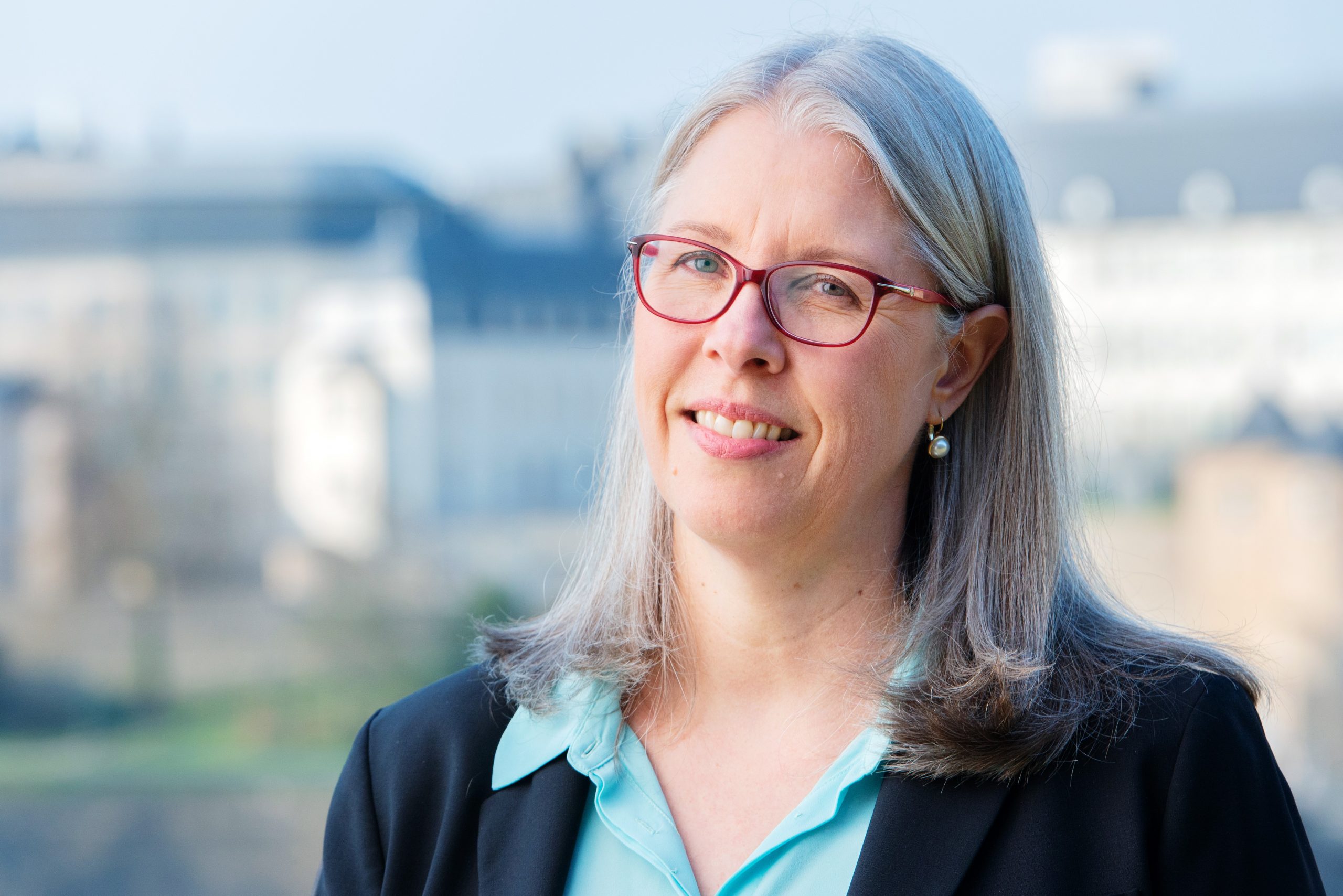LuxFLAG, which for 14 years has pioneered the concept of fund labelling to provide investors with transparency about ESG and other sustainability criteria, is about to stage its second Sustainable Investment Week from October 12 to 16. Chairwoman Denise Voss says the Covid-19 pandemic has helped to focus attention on issues such as inequality and exploitative labour practices – and that the need for transparency and education on ESG matters extends beyond investors and the public to the fund industry itself.

VB: What role has LuxFLAG played in the evolution of sustainable finance over the past 15 years?
Denise Voss: The Luxembourg Finance Labelling Agency is an independent and international non-profit organisation, founded in 2006 to promote the raising of capital for sustainable investment by awarding a recognisable label to eligible investment products.
LuxFLAG labels are recognised for their high standards and a rigorous assessment of the investment product’s investment holdings, strategy and procedures with respect to environment, social and governance matters as well as an affirmation of their transparency to investors – key components of the LuxFLAG eligibility criteria.
As of September 22, 2020, LuxFLAG had awarded labels to 303 investment products domiciled in 10 jurisdictions – Belgium, Denmark, Finland, France, Germany, Ireland, Italy, Luxembourg, the Netherlands and Spain – managed by 98 asset managers in 17 countries and representing approximately €128.2 billion of assets under management.
Sustainable finance has emerged as a major trend in the past couple of years. Through the award of labels to compliant investment products, LuxFLAG has played an important role in enhancing transparency and adding credibility toward investors. These in turn have increased their investment in ESG or sustainable funds, resulting considerable growth in assets of sustainable products, which saw $71 billion of inflows during the second quarter of 2020.
Lack of common standards
VB: How can the fund sector and sustainable finance more broadly deal with the problem of ‘greenwashing’? Should the rules on what activities can be financed by green bonds be drawn more strictly?
DV: By contrast to traditional bonds, green bonds are intended to finance or re-finance ‘green’ projects such as renewables, energy efficiency, bioenergy and sustainable urban transport, water and waste. Investors have traditionally been cautious about investing in these instruments primarily due to a lack of transparency on the use of proceeds and the very nature of those underlying assets, often leading to the risk of greenwashing.
Part of the challenge has also been a lack of common understanding and standards around what we mean by green investments. Initiatives such as the voluntary guidelines issued by the International Capital Market Association in its Green Bond Principles have promoted best market practice and standards on the use of proceeds, project evaluation, selection, and management of proceeds and reporting.
The GBPs are widely accepted and used by bond issuers, but still on a voluntary basis. Obligatory requirements on adherence to the GBPs or similar initiatives could help prevent greenwashing, but given the early stage of market development and lack of commonly accepted frameworks, one also could consider their gradual implementation.
VB: The volume of assets in ESG funds has been increasing rapidly in the past couple of years and particularly in 2020. What factors are driving this growth?
DV: In my opinion, investors – traditionally institutions but now retail investors as well – and regulators are key drivers of this recent growth, in addition to increased awareness of issues such as climate change among the general public. Covid-19 has also focused investors’ attention on social issues such as inequality, and the challenges for many people to access food, clean water and a living wage.
Embracing the EU regulatory framework
VB: How is LuxFLAG aiming to establish itself as a standard for certification of ESG and other varieties of sustainable funds? Will its processes and certification be aligned with the EU’s sustainable finance rules?
DV: Labels are voluntary today and are often investor-driven. However, initiatives such as the EU Ecolabel will likely enhance and perhaps help drive the demand for labels. In any case, the EU Action Plan for Sustainable Finance has established a regulatory framework to which the financial industry is adapting. Labelling agencies such as LuxFLAG are also having to adapt to these EU standards.
VB: ESG, sustainable finance, responsible investment, ethical investment and impact investing remain confused in the minds of many members of the public. Several of LuxFLAG’s own labels appear to overlap. Can the establishment of European and global definitions and rules bring clarity? How does sustainable finance tie in with your own long-standing efforts to develop investor education?
DV: Agreed, there is a lot of terminology in the sustainable finance sphere, and it can be confusing. It’s very important, for example, to distinguish between ESG investing and impact investment. ESG investing involves taking into account ESG factors as well as financial considerations when deciding which companies to invest in – really looking at the entire picture when it comes to a company and what it could look like in the future.
Impact investing is a subset of ESG investing, but goes even further by choosing companies that are actively seeking to make tangible improvements, for instance in the quality of drinking water for communities. Investors usually expect a profit from such a company, but its impact will be as important or even more so for the impact investor.
LuxFLAG has five labels, of which four are impact labels (Microfinance, Environment, Climate and Green Bond) and one ESG label. The difference between the labels is highlighted in the criteria for each label, available on LuxFLAG’s website.
When it comes to sustainable finance, education is really critical for investors to understand the terminology, for example ESG investment versus impact investing. Education about sustainable finance is also very important within the industry itself, given the topic is relatively new for some asset managers and other financial actors. It’s important that sustainable finance is understood throughout an asset manager’s organisation, given there is an impact not only for portfolio management but for the fund accounting, client service, legal and compliance teams, to name but a few.
Sustainability priorities after Covid-19
VB: The Covid-19 pandemic has left economies struggling throughout the world and presented governments with the challenge of stimulating a rebound. How can we expect the coronavirus pandemic to impact sustainability? Is there a risk that sustainability priorities will be put on the back burner? Or is it an opportunity to build ESG criteria into the economic structures of the future?
DV: Covid-19 is also focusing our attention on the ‘S’ in ESG – social issues. In fact it has lifted the lid on issues that already existed in our society but were not recognised by many of us, for instance widespread inequality and unfair labour practices. I’m hopeful that sustainability priorities will be an important part of “building back better” during and after Covid-19.
Europe is certainly trying to keep it on the front burner: for example the European Green Deal, the programme of the current European Commission which is “striving to be the first climate-neutral continent”. There is a will to make the transition just and inclusive for all, especially since climate change clearly impacts more severely communities that suffer from the greatest inequality.
In addition, the EU Action Plan for Sustainable Finance will continue to require financial players to consider and be transparent about environmental and social issues, for instance through the Sustainable Finance Disclosure Regulation. One requirement will be disclosure of ‘principal adverse impacts’ which means’, for example, firms having to disclose whether and how they take environmental, social and governance factors into account in their investment decision-making process, information that must be available on their website.
VB: As the world’s largest hub for cross-border funds, Luxembourg is seeking to carve out a central role in sustainable finance. What key steps has the country taken toward this goal and what does it still have to do?
DV: Sustainable finance has been top on Luxembourg’s agenda for several years as a result a number of public and private initiatives. To mention just a few, Luxembourg has become the first European country to launch a Sustainability Bond Framework.
There’s also the EIB-Luxembourg platform to support investment in climate finance; the International Climate Finance Accelerator, which supports managers in the creation of financial instruments to finance climate action; LuxFLAG labels to add further transparency and credibility to investment products, and the Luxembourg Green Exchange, which facilitates investor choice through green bond listings.
If you’re interested in sustainability, finance, and the funds sector, you should read:

